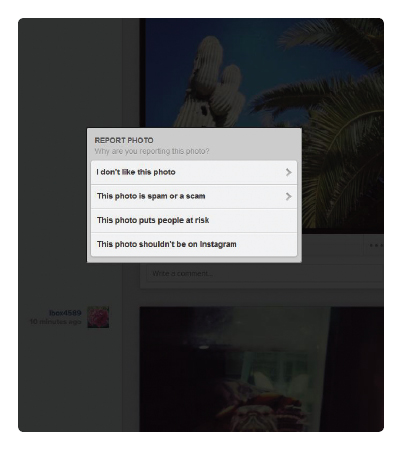Types of Mediated Communication Challenges
When people experience online disinhibition and empathy deficits, they’re more likely to encounter challenges in mediated communication. The most common of these are digital deception, flaming and trolling, and online harassment and cyberbullying.
Digital Deception. Anyone who sends messages that intentionally mislead or create a false belief in recipients is committing digital deception (Hancock, 2007). Digital deception can take several forms. One form is identity-based digital deception, whereby someone falsely misrepresents his or her identity or gender (Hancock, 2007). Some people exaggerate or enhance aspects of their identity online. In the movie Catfish, Angela deceived Nev by lying about her name, age, physical appearance, and musical abilities. Although that was a special case, similar deception is common on dating sites, where people exaggerate their education and income levels and lower their weight and age (J. A. Hall, Park, Song, & Cody, 2010).
Another form of digital deception is message-based digital deception, which is the manipulation of information with the intent of misleading recipients (Hancock, 2007). This type of deception can include butler lies, which people use to avoid conversation, prevent embarrassment, or simply be polite (Hancock & Toma, 2009). For example, you ignore a friend’s text but later reply saying you “just got her message.” Message-based digital deception also includes serious lies that can devastate personal, social, and work relationships (De-Paulo, Kirkendol, Kashy, Wyer, & Epstein, 1996). Examples include texting your spouse that you’re in a work meeting to cover up an affair, or e-mailing a professor that you missed an assignment due to illness, when in fact it’s just because you were unprepared.

Flaming and Trolling. If you’ve ever received mediated messages that are hostile, insulting, or profane, you know they can be hurtful. When people say vicious and aggressive things online that they would never say in person, they are flaming. Flaming is a direct outcome of online disinhibition and empathy deficits: when you feel little empathy toward others and also feel comparatively “invisible,” you’re more likely to communicate in inappropriate, destructive ways.
To reduce the likelihood of flaming in your own mediated communication, draft text messages, e-mails, and posts and then reread them before sending, asking yourself, “Would I say the same thing to this person’s face?” If your answer is no, then don’t send the message. Instead, delete it and consider more constructive ways to express your thoughts.
Some people post flame messages on purpose to start fights, a practice known as trolling. People troll for their own enjoyment or because they’re bored (Donath, 1999). Read the comments for popular YouTube videos, and you’ll see trolling at work (“My 3-year-old sings and plays better than this sucky band!”). The best response to trolls is to ignore them. But this is often easier said than done. Trolls can be very disruptive to online communities because their intent is to cause discord and they will often continue to post until disruption is achieved. When a hostile comment is posted online, it’s not unusual to see the acronym DNFTT (Do not feed the trolls) soon follow, as a warning not to “take the bait.”
Online Harassment and Cyberbullying.Some texts, e-mails, or postings constitute online harassment: mediated messages perceived by the recipient as disturbing, threatening, or obsessive (Walker, Sockman, & Koehn, 2011). For instance, your roommate—much to your embarrassment and against your direct requests not to—repeatedly takes pictures of you drinking at parties and then posts them on Instagram. Or a coworker forwards e-mails with sexist humor and images to you at work, even after you ask him to stop. Never ignore this kind of communication. If it happens, directly and clearly ask the person to remove the post or to stop sending the e-mails. If the person refuses, contact people in positions of authority (managers, resident advisers, professors, parents) and ask for advice on what to do.
Online harassment can turn into cyberbullying if the communication patterns become persistent and are used to exert power over you (Walker et al., 2011; Wolak, Mitchell, & Finkelhor, 2006). Much like face-to-face bullying, cyberbullying is intended to cause social embarrassment, inflict emotional pain, or damage a person’s reputation. Although cyberbullying largely occurs among teens, it can also happen in the workplace in the form of threatening e-mails or voice mails and sexually charged material (White, 2010). If you believe you’re being cyberbullied, firmly tell the bully to stop, and keep written records of the offending messages. If the bullying doesn’t stop, meet with an authority figure (such as a school or human resource administrator) to describe what’s taking place and to ask for help. Most important, if the bullying has you fearing for your physical safety, immediately report it to local law enforcement. Many states have laws to protect victims of cyberbullying. If you need help with handling cyberbullying, refer to www.stopbullying.gov.